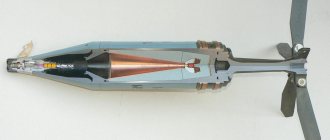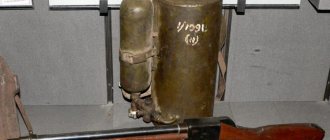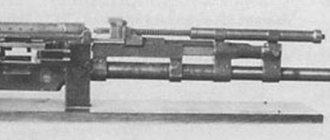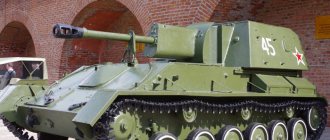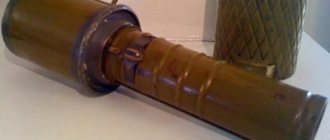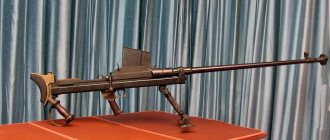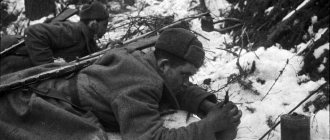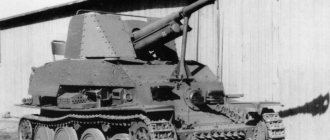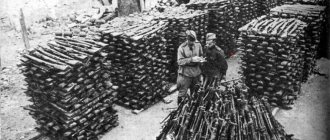Artillery ammunition is a weapon that is part of missile and artillery weapons (RAV) fire systems and largely determines the combat capabilities and effectiveness of fire destruction of the enemy, including the solution of a number of special tasks to support troop operations.
They can be used to destroy manpower and equipment, destroy military and civilian structures, as well as to perform special tasks: smoke control, camouflage maneuvers of friendly troops, preventing the deployment of enemy troops, illuminating an area or illuminating targets in the dark, etc. .
Artillery shells are among the main types of material means of warfare. The provision of highly effective ammunition in the required quantities played and continues to play a key role in achieving victory. With the development of technology and means of defense, the consumption of ammunition during combat operations increases immeasurably. Thus, in 1760, during the capture of Berlin, Russian artillery expended 1,200 shells, and Soviet artillery, during the assault on Berlin in 1945, expended 7,226 wagons of shells and mines.
At the present stage of development of military art, the performance of combat missions must be ensured with the least expenditure of material resources. This requires widespread use of highly effective ammunition.
Depending on the specifics of the fire missions being solved, as a rule, several types of ammunition are included in the combat sets of artillery systems.
HIGH EXPLOSIVE ARTILLERY SHELLS
The basis of the ammunition of the ground forces' barrel and rocket artillery is high-explosive fragmentation (HE) ammunition . This is due to the fact that HE ammunition hits up to 60% of all targets on the battlefield. This type of artillery shells allows you to effectively combat almost all types of targets: openly located and manpower located in shelters, field-type fortifications, infantry fighting vehicles, armored personnel carriers, artillery guns and mortars both in firing positions and on the march, OP, radar, etc. .d. Moreover, modern artillery delivery vehicles make it possible to hit targets at a distance of more than 50 km from the line of combat contact.
The improvement of the ammunition of the ground forces' cannon and rocket artillery is currently moving along the path of increasing the firing range, the power of action at the target, and reducing technical dispersion. The firing range is being increased mainly through modernization of delivery vehicles and improvement of the shot design (aerodynamic shape of the projectile body, design of the propellant charge), the use of gas generators in the design of the projectile, bottom excavation and the use of new high-energy powders, as well as the use of active-rocket projectiles .
Increasing the effectiveness of ammunition is carried out by using new explosives, lighting and smoke compositions, alloyed projectile steels, and using a body design with organized crushing. When designing new ammunition, special attention is currently paid to the safety of their combat use throughout their entire life cycle.
Deadly Funnel
How does the cumulative effect work? The idea is very simple. In the head of the ammunition there is a recess in the form of a funnel lined with a millimeter (or so) layer of metal with an acute angle at the apex (socket towards the target). The detonation of the explosive begins from the side closest to the top of the crater. The detonation wave “collapses” the funnel towards the axis of the projectile, and since the pressure of the explosion products (almost half a million atmospheres) exceeds the limit of plastic deformation of the lining, the latter begins to behave as a quasi-liquid. This process has nothing to do with melting; it is precisely the “cold” flow of the material. A very fast cumulative jet is squeezed out of the collapsing funnel, and the rest (pestle) flies from the point of explosion more slowly. The distribution of energy between the jet and the pestle depends on the angle at the top of the funnel: at an angle of less than 90 degrees, the energy of the jet is higher, at an angle of more than 90 degrees, the energy of the pestle is higher. Of course, this is a very simplified explanation - the mechanism of jet formation depends on the explosive used, on the shape and thickness of the lining.
Impact core One of the varieties of the cumulative effect. To form an impact core, the cumulative notch has an obtuse angle at the apex (or a spherical shape). When exposed to a detonation wave, due to the shape and variable thickness of the walls (thicker towards the edges), the lining does not “collapse”, but is turned “inside out”. The resulting projectile with a diameter of a quarter and a length of one caliber (the original diameter of the notch) accelerates to 2.5 km/s. The armor penetration of the core is less than that of a cumulative jet, but it is maintained over almost a thousand recess diameters. Unlike a cumulative jet, which “takes away” only 15% of its mass from the pestle, the impact core is formed from the entire lining.
When the funnel collapses, a thin (comparable to the shell thickness) jet accelerates to speeds on the order of the explosive detonation speed (and sometimes higher), that is, about 10 km/s or more. This jet does not burn through the armor, but penetrates it, just as a jet of water under pressure erodes sand. However, during the formation of the jet, its different parts acquire different speeds (the rear parts are slower), so the cumulative jet cannot fly far - it begins to stretch and disintegrate, losing its ability to penetrate armor. The maximum effect of the jet is achieved at a certain distance from the charge (it is called focal). Structurally, the optimal armor penetration mode is ensured by the gap between the notch in the charge and the projectile head.
CLUSTER ARTILLERY AMMUNITION
In order to increase the effectiveness of destruction of area targets, cluster munitions with fragmentation warheads have been created. Projectiles of this type are used in cannon artillery of 120, 152 and 203 mm calibers, 240 mm caliber mortars, 220 and 300 mm caliber MLRS, as well as in TR and OTR combat units. Due to the many points of rupture of combat elements (BE), the area of fragmentation damage compared to conventional ammunition of the same caliber increases many times. Cluster munitions are especially effective when firing at manpower, unarmored and lightly armored vehicles located openly and located in open fortifications.
CONCRETE PROJECTILES
With the advent of fortification structures such as bunkers, in which the personnel inside are covered with a concrete cap that is not penetrated by conventional HE shells, the need arose to create ammunition capable of effectively combating these targets. , concrete-piercing shells were created . They combine two types of action: impact (due to kinetic energy) and high-explosive from the activation of a bursting charge. Due to the need to achieve high kinetic energy, concrete-piercing shells are used only in large-caliber guns - 152 and 203 mm. The defeat of personnel inside the fortification occurs due to the high-explosive action or due to fragments of the concrete cap formed when the projectile hits.
HIGH PRECISION ARTILLERY AMMUNITION
In the 80s of the last century, precision-guided ammunition . This is the name given to ammunition that, like homing missiles, has devices on board that detect a target and guide the ammunition towards it until it hits it directly. The first domestic samples of such ammunition - the 240-mm adjustable high-explosive mine "Smelchak" and the 152-mm guided high-explosive fragmentation projectile "Krasnopol" - hit targets illuminated by the radiation of a laser target designator. This type of guidance system is called semi-active laser guidance system.
In the 90s, a new type of high-precision ammunition appeared, capable of autonomously, without human intervention, detecting armored targets by their thermal radiation. The first such sample, a 300-mm cluster projectile with self-aiming combat elements (SPBE) for the Smerch MLRS, was created in Russia. The main components of the SPBE are the target sensor - an optical-electronic detector with a narrow field of view - and the associated warhead of the "shock core" type. Such a warhead is similar to a cumulative one, but has a lining in the form of a spherical segment of small curvature. When detonated, a high-speed compact kinetic action element is formed from the lining, falling into the area observed by the target sensor.
Further development of high-precision artillery ammunition is in the following directions:
- creating homing projectiles and combat elements with autonomous homing heads;
- increasing the noise immunity of autonomous target sensors and homing heads by increasing the number of detection channels of different physical nature - visible range, thermal, radiometric and radar, laser ranging, etc.;
- creating combined semi-active-passive guidance systems capable of aiming ammunition at laser-illuminated targets and switching to an autonomous (passive) mode during the guidance process or operating in only one of the modes;
- equipping long-range high-precision projectiles with control systems in the middle part of the trajectory, operating according to data from space radio navigation systems.
About cumulative
Such ammunition was first used by Nazi Germany in 1941. At that time, the USSR did not expect the use of such projectiles, since their principle of operation was known, but they were not yet in service. The key feature of such projectiles was that they had high armor penetration due to the presence of instantaneous fuses and a cumulative notch. The problem encountered for the first time was that the projectile rotated during its flight. This led to the dispersion of the cumulative arrow and, as a result, reduced armor penetration. To eliminate the negative effect, it was proposed to use smooth-bore guns.
ANTI-TANK GUIDED MISSILES (ATGM)
Anti-tank missile systems occupy a special place in the missile and artillery weapons system. ATGMs continue to be the most effective means of units of the Ground Forces in confrontation with tanks and armored combat vehicles.
At the end of the 60s, to replace the first generation anti-tank systems with the manual control system "Malyutka", the anti-tank systems "Fagot" and "Metis" were developed with a semi-automatic control system, in which the operator's task is to point and hold the sight mark on the target. The missile is guided automatically using a direction finder located in the ground control equipment.
Further development of wearable ATGMs followed the path of ensuring firing at night without target illumination, increasing armor penetration and reducing weight and size characteristics.
Based on the experience of numerous local wars, armed conflicts and tactical exercises, the first generation ATGMs and their improved versions with a semi-automatic control system - the domestic complexes "Phalanga-M" ("Phalanga-P"), "Malyutka-M" ("Malyutka-P") ") - were put into service as part of the Mi-24 and Mi-8 helicopters, respectively, which were the most dangerous enemy for tanks due to their high maneuverability and the inability of tank fire control systems to combat air targets.
The main areas for improving ATGMs are:
- expanding the range of combat use conditions (night, precipitation, fog);
- increasing the firing range and ensuring shooting from closed firing positions;
- increasing the combat rate of fire of the complexes;
- increased noise immunity;
- the use of unconventional trajectories for approaching ATGMs to the target and methods of hitting them;
- development of multi-purpose complexes.
SPECIAL ARTILLERY AMMUNITION
During combat operations, in addition to the destruction or suppression of enemy targets, other tasks arise that are not directly related to the destruction of personnel and equipment. To perform such tasks, special-purpose ammunition : smoke, smoke-smoking, lighting, etc.
Smoke and smoke-smoking shells (mines) are used to camouflage the maneuvers of friendly troops or to blind enemy troops. Such ammunition is used in systems of almost all calibers of artillery of the Ground Forces: from 82 to 152 mm. These shells (mines) are especially effective in calm weather, when the smoke cloud does not dissipate for a long time.
When conducting combat operations at night, illumination ammunition is used to illuminate enemy targets. They, like smoke ones, were developed and adopted for service with artillery systems of caliber from 82 to 152 mm.
The burning time of a torch of illuminating ammunition descending by parachute ranges from 25 to 90 seconds, and when they are sequentially “hung” by artillery, the illumination zone can be maintained throughout the entire duration of the combat mission. In addition, the massive use of illumination ammunition at night has a strong psychological impact on enemy personnel.
The mechanism of action of a shaped charge
Cumulative jet
After the explosion of the detonator capsule of the charge, a detonation wave arises, which moves along the axis of the charge.
The wave, propagating towards the facing of the cone surface, collapses it in the radial direction, and as a result of the collision of parts of the facing, the pressure in it increases sharply. The pressure of the explosion products, reaching about 1010 Pa (105 kgf/cm²), significantly exceeds the yield strength of the metal, therefore the movement of the metal lining under the influence of the explosion products is similar to the flow of a liquid, which, however, is caused not by melting, but by plastic deformation.
Similar to a liquid, the lining metal forms two zones: a large mass (about 70–90%) slowly moving “pestle” and a smaller mass (about 10–30%) thin (about the thickness of the lining) hypersonic metal jet moving along the axis of symmetry of the charge , the speed of which depends on the detonation speed of the explosive and the geometry of the funnel. When using funnels with small angles at the apex, it is possible to achieve extremely high speeds, but at the same time the requirements for the quality of the lining are increased, since the likelihood of premature destruction of the jet increases. Modern ammunition uses funnels with complex geometry (exponential, stepped, etc.) with angles ranging from 30 to 60°; the speed of the cumulative jet reaches 10 km/s.
| The process of pressing in a copper cladding skirt, it is also in the form of a finished product and inside the loaded ammunition in a section |
Since when a cumulative jet meets the armor, a very high pressure develops, one or two orders of magnitude greater than the tensile strength of metals, the jet interacts with the armor in accordance with the laws of hydrodynamics, that is, upon collision they behave like ideal liquids. The strength of armor in its traditional sense in this case plays practically no role, and the density and thickness of the armor come first.
The theoretical penetration ability of cumulative projectiles is proportional to the length of the cumulative jet and the square root of the ratio of the density of the cone (funnel) lining to the density of the armor. The practical depth of penetration of a cumulative jet into monolithic armor for existing ammunition varies in the range from 1.5 to 4 calibers.
When the conical shell collapses, the velocities of individual parts of the jet turn out to be different, and the jet stretches in flight. Therefore, a slight increase in the gap between the charge and the target increases the penetration depth due to the lengthening of the jet. However, at significant distances between the charge and the target, the continuity of the jet is disrupted, which reduces the armor-piercing effect. The greatest effect is achieved at the so-called “focal length”, at which the jet is stretched as much as possible, but has not yet been broken into separate fragments. To maintain this distance, various types of tips of appropriate lengths are used.
When moving in a solid medium, a gradiently broken cumulative jet self-centers, and the diameter of the track decreases as it moves away from the focal point. When a cumulative jet broken into fragments moves in liquids and gases, each fragment moves along its own trajectory, and the diameter of the track increases as it moves away from the focal point. This explains the sharp decrease in the penetration ability of high-gradient cumulative jets when using anti-cumulative screens.
The use of a charge with a cumulative notch without metal lining reduces the cumulative effect, since instead of a metal jet there is a jet of gaseous explosion products; however, this achieves a significantly stronger armor effect.
Impact core
Main article: Shock core
Impact core
- a compact metal form, reminiscent of a pestle, formed as a result of compression of the metal lining of a shaped charge by the products of its detonation.
To form an impact core, the cumulative notch has an obtuse angle at the apex or the shape of a spherical segment of variable thickness (thicker at the edges than in the center). Under the influence of a shock wave, the cone does not collapse, but is turned “inside out.” The resulting projectile with a diameter of a quarter and a length of one caliber (the original diameter of the notch) accelerates to a speed of 2.5 km/s. The armor-piercing effect of the core is lower than that of a cumulative jet, but it remains at a distance of up to 1000 calibers. In contrast to the cumulative jet, which consists of only 15% of the lining mass, the impact core is formed from 100% of its mass.
AMMUNITION FOR TANK GUNS
As is known, the basis of the striking force of combined arms units and formations are subunits and units that include armored vehicles. The main armament of modern Russian tanks (125-mm D-81 cannon) includes the following types of ammunition: armor-piercing sub-caliber, cumulative and high-explosive fragmentation rounds, tank guided missiles.
For 125-mm guns, separate-case-loading shots are used. The main propellant charge is the same for all types of projectiles, which ensures the unification of tank loading mechanisms and safety when fired.
Armor-piercing sabot projectiles (APS) are one of the main means of destroying highly protected objects. With all the variety of methods for accelerating a projectile, the principle of hitting an armored target remains unchanged - penetration of armor and the formation of damaging fragments in the space behind the armor due to the mechanical impact of a high-density body at a high impact speed. The dynamics of the increase in the armor penetration of BPS practically corresponded to the increase in the resistance of tank protection. The increase in the armor-piercing effect of BPS was mainly due to an increase in overall weight characteristics and improvement in the design of projectiles: the use of cores and bodies made of materials with increased physical and mechanical properties, the transition to long-body projectiles.
The action of cumulative projectiles is based on penetrating the external defense - the target - due to the cumulative effect and hitting vulnerable elements beyond the barrier with a fragmentation stream. The constant confrontation between increasing the armor penetration of cumulative weapons and increasing target protection has shaped the appearance of modern cumulative ammunition as a high-tech product with a tandem construction scheme. The use of new design solutions made it possible to raise the main characteristic of cumulative ammunition (armor penetration) to the level of penetration of homogeneous armor over one meter.
Effective use
HEAT shells can be used by any type of military force, but their use in some cases does not allow the full potential of the fired ammunition to be revealed. For example, shells for rifled guns are capable of being stable in flight. But at the same time, the force that arises does not allow the cumulative jet to be released.
Military engineers have come up with a way around this problem. When, for example, in flight, only the ammunition body rotates, and the cumulative part, mounted on bearings, remains completely motionless. But such solutions are ineffective, because complicate the manufacturing process.
The shells used by smoothbore cannons develop too high a speed, which does not allow them to release a cumulative jet in a focused manner to destroy the armor plate of the specified target.
The greatest effectiveness of use occurs when shaped charges are mounted on stationary and low-velocity ammunition, such as mines.
There is a relatively simple way to protect equipment - dispersing the jet with a directed explosion. A special device installed on armor plates (tank, infantry fighting vehicle, armored personnel carrier) releases a combat charge, which explodes when the jet flies to a dangerous distance. This is called dynamic protection. Now such protection is common on all modern military equipment.
But the installed dynamic protection does not guarantee complete protection. On the contrary, engineers invented countermeasures - installing a special warhead in the projectile. It consists of several charges. One of which penetrates the defense, and the other penetrates the protective layer of the target’s armor plate.
Interesting fact! At the moment, cumulative action ammunition with 2-3 charges has been developed and successfully tested.

